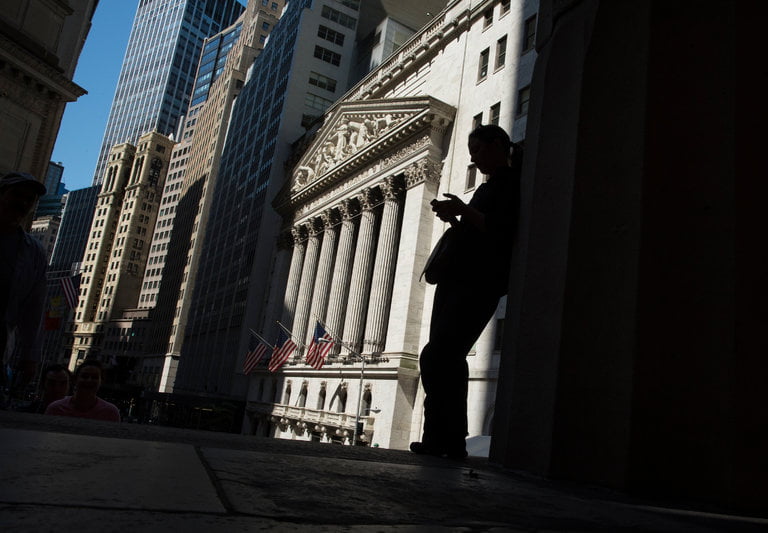
After months of talk and hype, the world’s biggest banks have taken the first steps toward moving a significant piece of financial infrastructure onto a so-called blockchain — the technology introduced to the world by the virtual currency Bitcoin.
The company that serves as the back end for much Wall Street trading — the Depository Trust and Clearing Corporation, or D.T.C.C. — said on Monday that it would replace one of its central databases, used by the largest banks in the world, with new software inspired by Bitcoin. The organization, based in New York, plays a role in recording and reporting nearly every stock and bond trade in the United States, as well as most valuable derivatives trades.
IBM, which has been making a big push into blockchain technology, will be leading the project for the D.T.C.C. and aims to have it fully functioning by early next year.
“This is a real tangible step into what could be a very different future for Wall Street,” Michael C. Bodson, the chief executive of the D.T.C.C., said in an interview.
The announcement is one of the most advanced steps yet in Wall Street’s continuing effort to harness the technological concepts underlying Bitcoin.
Financial institutions around the world have been fascinated by Bitcoin not because of the volatile virtual currency itself, but because it introduced a new way of executing and recording financial transactions without a central authority.
All Bitcoin transactions take place on a global financial ledger known as a blockchain, which is maintained and updated by a network of thousands of computers around the world, similar to the way that Wikipedia is kept up by diffuse volunteers rather than by a single company.
Wall Street has been drawn to the blockchain concept because it allows information to be recorded in real time without the bottleneck that central authorities generally introduce. The decentralized nature of the technology also makes it harder for attackers, or hackers, to take control of the network.
The D.T.C.C. project will not use Bitcoin’s blockchain. Instead it is building something similar to a blockchain, known as a distributed ledger, which multiple financial institutions can update and view at the same time. Unlike Bitcoin’s blockchain, the D.T.C.C. ledger will be open only to invited participants.
Mr. Bodson said the basic promise of a distributed ledger is that it provides “one version of the truth that everyone shares and everyone utilizes.”
The new ledger will replace an existing database, known as the Trade Information Warehouse, that records information about every credit default swap trade that comes through the D.T.C.C. Credit default swaps, which played a major role in the 2008 financial crisis, are essentially bets on the success of bonds.
The D.T.C.C. oversaw about $11 trillion in credit default swaps trading last year, or 80 percent of all trades in the global market. Banks rely on the Trade Information Warehouse to determine when payments are due and what size they will be.
Because the database will be edited in group fashion, the hope is that it will provide a more streamlined and reliable source of information.
Mr. Bodson said that if the database was successful, the D.T.C.C. could use the technology to move money rather than just record information.
Over the last few years, most banks have announced efforts to explore the potential utility of blockchain technology. This has gone to the highest levels, with some central banks talking about moving their own national currencies onto some sort of blockchain.
But while there have been endless announcements about tests and proofs of concept, almost no one has disclosed plans to actually use a blockchain or distributed ledger in the real world.
Until now, the most discussed announcement came from the Australian stock exchange, which said in early 2016 that it had hired an American software company, Digital Asset Holdings, to build a distributed ledger for its back-end systems. The Australian exchange, though, has said it has not made a final decision on whether it will move to the new technology.
The D.T.C.C. has been talking publicly about its interest in the blockchain for a while, and last year it announced that it had successfully completed a test of a distributed ledger database in its credit default swaps trading business. Mr. Bodson said that since then the D.T.C.C. had determined that a distributed ledger would be cheaper to run than its existing system.
The D.T.C.C. tests were done using a distributed ledger technology created by a start-up, Axoni, that will also be involved in the project, along with R3, a consulting firm working with dozens of banks on blockchain projects, and IBM.
“The fact that they are taking this as seriously as they are is indicative of the broad-felt sense in the financial community that this technology is here to stay,” Charley Cooper, a managing director of R3, said of the D.T.C.C.
[Source:-The New Yourk Times]




